Kia Tasman 2025: Australian first drive
We get behind the wheel of one of the most anticipated all-new utes to launch in the current era and hit the off-road trails. Is Kia Tasman worth the hype?
Chasing Cars has previously had a good look at it inside and out at its global launch event in Tasmania, but this is the first time we’ve been able to drive the 2025 Kia Tasman 4×4 ute. Come July, Kia’s debut pick-up will be officially launched, but we’re one of the few Aussie outlets to get in at the ground level for an early Kia Tasman punt on dirt.
I mention dirt on purpose, because the two vehicles you will see featured are pre-production models in various stages of design, if based on the top spec X-Pro variant that’s price from $74,990 before on-roads.
Why two? The red example on the page before you features a production-ready interior, if with pre-production suspension. Meanwhile, the tan vehicle is the opposite, with Aussie-developed showroom-ready suspension spec, if featuring pre-prod cabin.
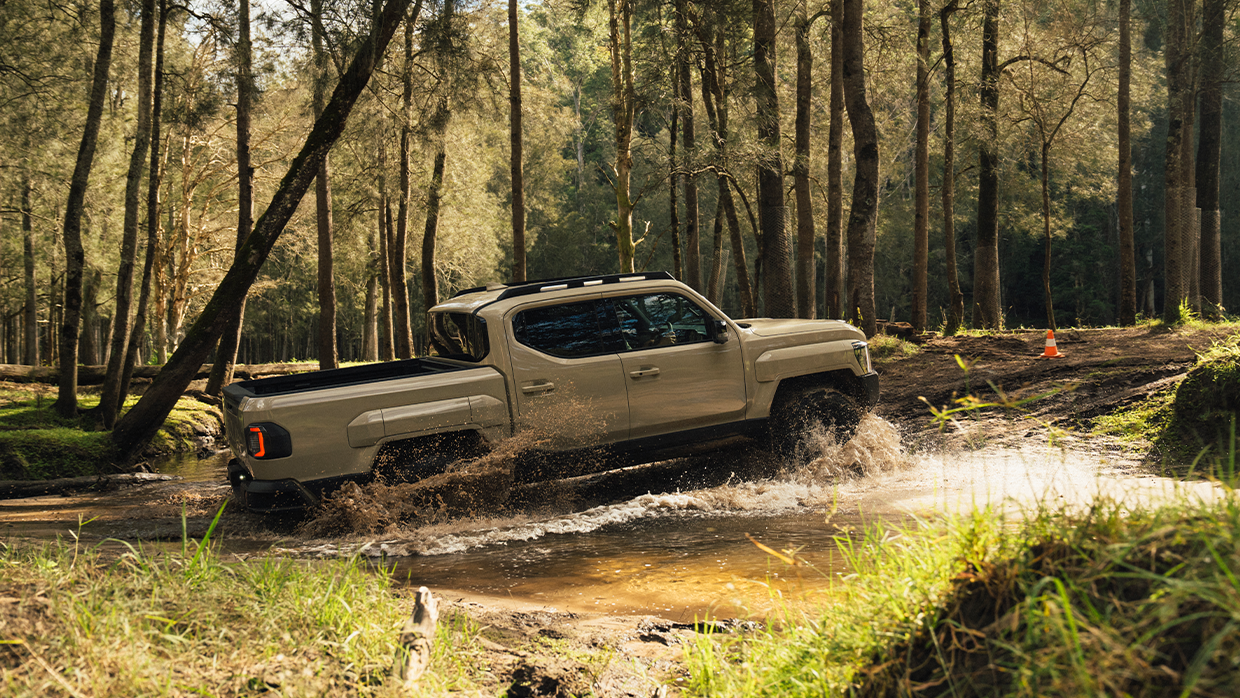
This sadly means they aren’t road registered, making our time behind the wheel limited to dirt road driving on private property.
In the words of Kia’s General Manager, Product Planing, Roland Rivero, this is a first taste of the 2025 Kia Tasman, if a genuine one given the model’s key facets are spread across two test vehicles. So clearly we can’t give a definitive verdict on the Tasman until we test the full-fat production ute.
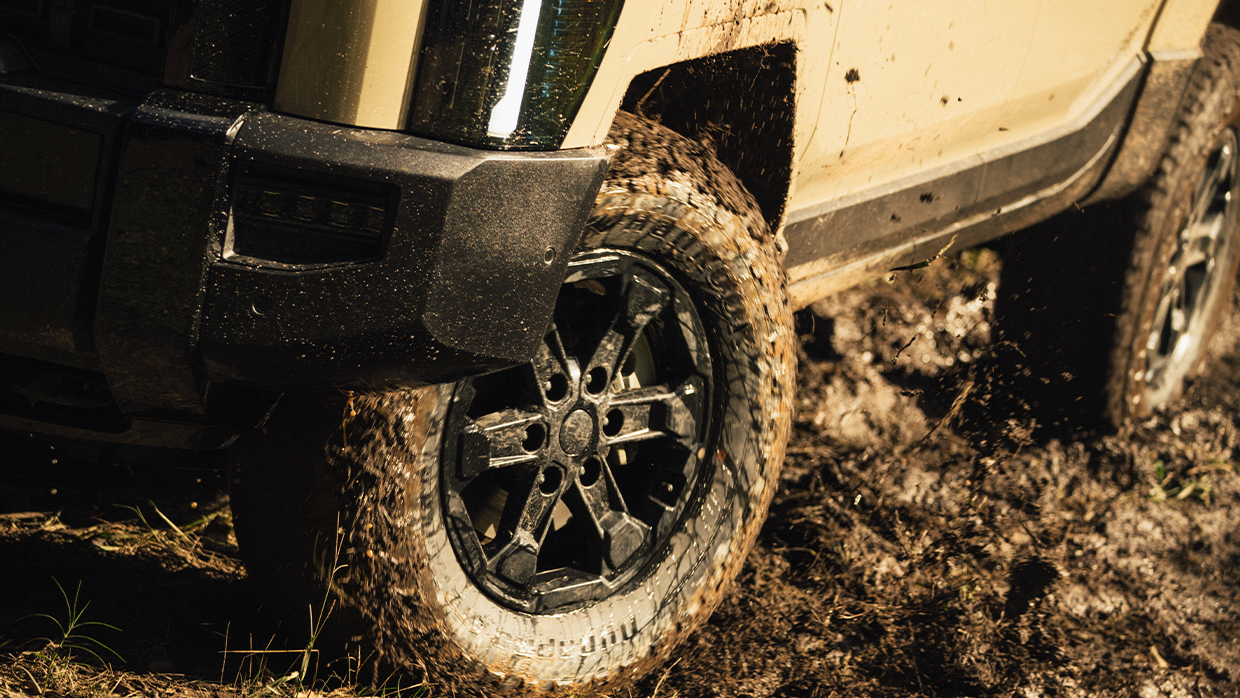
As the global Tasman is largely a Kia Australia development, it feels fortuitous to be involved in the program from this stage of its product development, complete with insight from those doing the developing.
Kia Australia sounds confident right off the bat, too, describing its much anticipated if yet unreleased ute as shaping up to be the best in class – a huge call in such a competitive and potentially lucrative automotive space.
Starting from the ground up, Kia created an all-new ladder frame chassis, bespoke to the Tasman. Robustness was the key design objective we’re told and, as such, Kia engineers decided wisely to stick with a ladder frame chassis construction over a monocoque chassis.
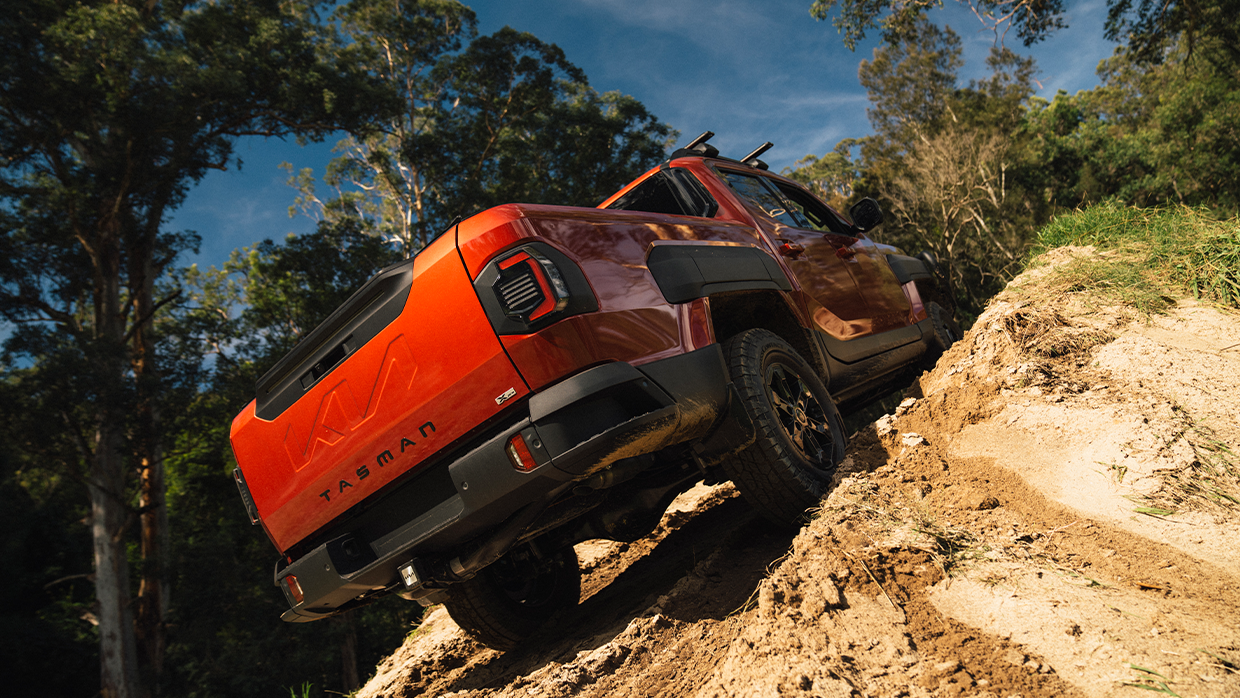
Suspension wise, lower control arm bushes are said to be have been enhanced for longevity. Frequency selective shock absorbers with hydraulic bump stops are also a part of the mix, inclusions normally seen on a desert racer rather than a commercial-grade dual cab. Are you entertained?
At the back end, a traditional solid rear axle leaf spring arrangement joins the party as you’d expect. The rear differential is seriously massive too – it looks the part.
When asked about future variations, Kia officials said there’s no rush for them to look at a coil-sprung rear end for the Tasman. However, that would change for Kia if an SUV version of the Tasman was to be created. You heard it here first…
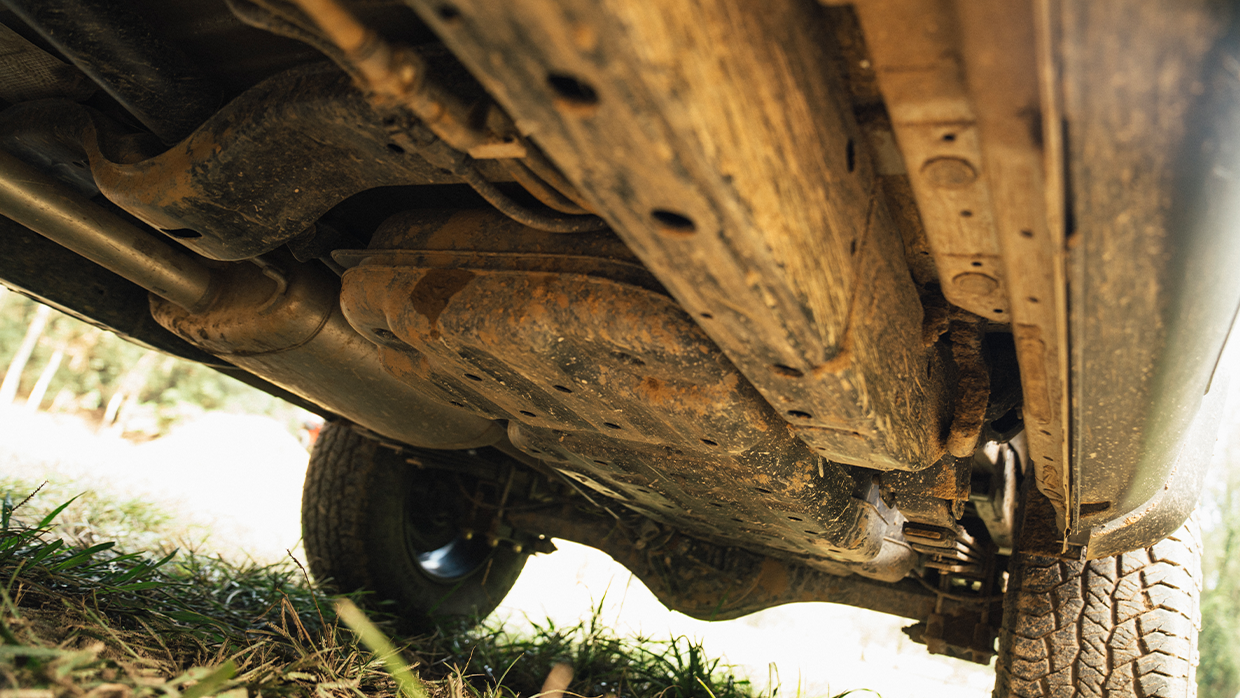
Performance from the Australian-tuned suspension is really a strong point of the Kia Tasman. If you’re expecting it to ride like a Chinese-manufactured ute – think JAC or LDV, for example – you might be pleasantly surprised.
Speaking with the product developers, it’s clear that they benchmarked this ute against others in the field. I’m not a betting man, but I’d put a dollar on the fact Kia have used vehicles like the Ford Ranger as a baseline, and set out to create something better again.
Does the Tasman ride better than the segment benchmark Ford Ranger? The jury is out, but we’re looking forward to comparing the two competitors in due course, that’s for sure.
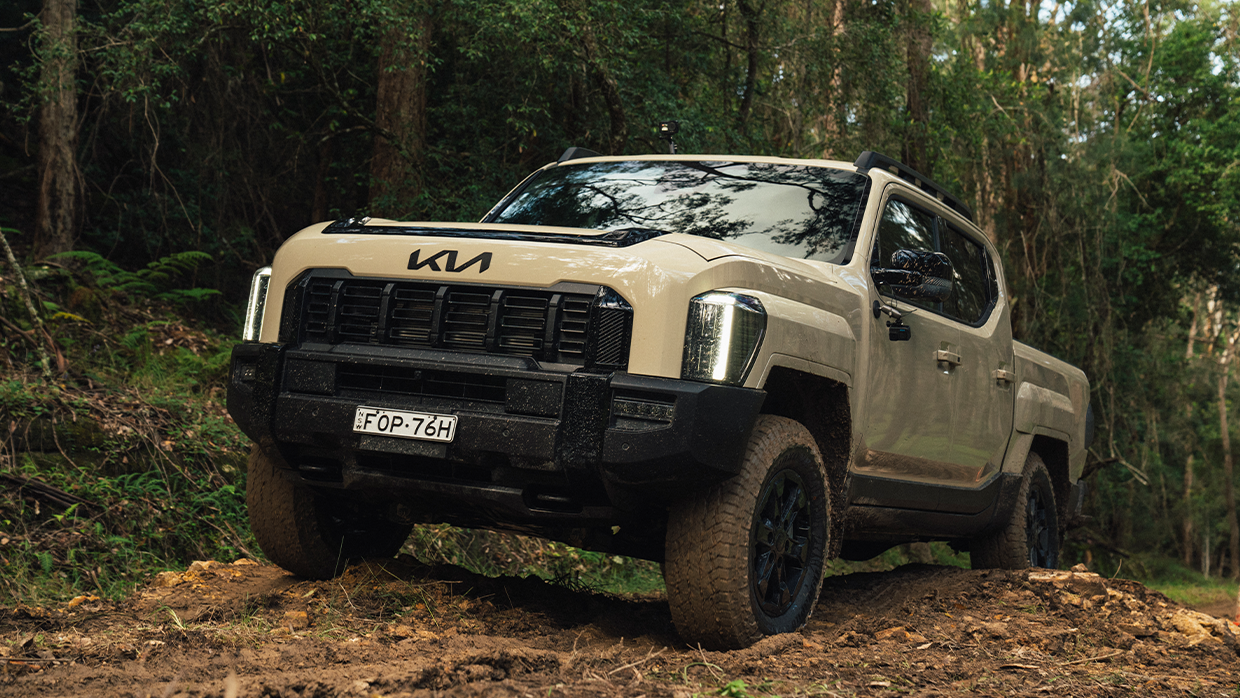
We were told multiple revisions were made, and after driving a pre-production model with the older generation of development suspension, I could immediately feel the improvement in the newer, revised setup.
Ride quality on jittery surfaces is smooth and predictable during suspension compression, passenger comfort is exceptional, and high-speed dirt a walk in the park. Kia said it needed the Tasman to be a solid compromise in all settings, and as lofty a goal as that seems, my initial take is that this is one area they have nailed.
Articulation, front-and-rear, is impressive too. Combined with an effective traction control system, featuring various drive modes – the 2025 Kia Tasman seems to be a very capable off-roader.
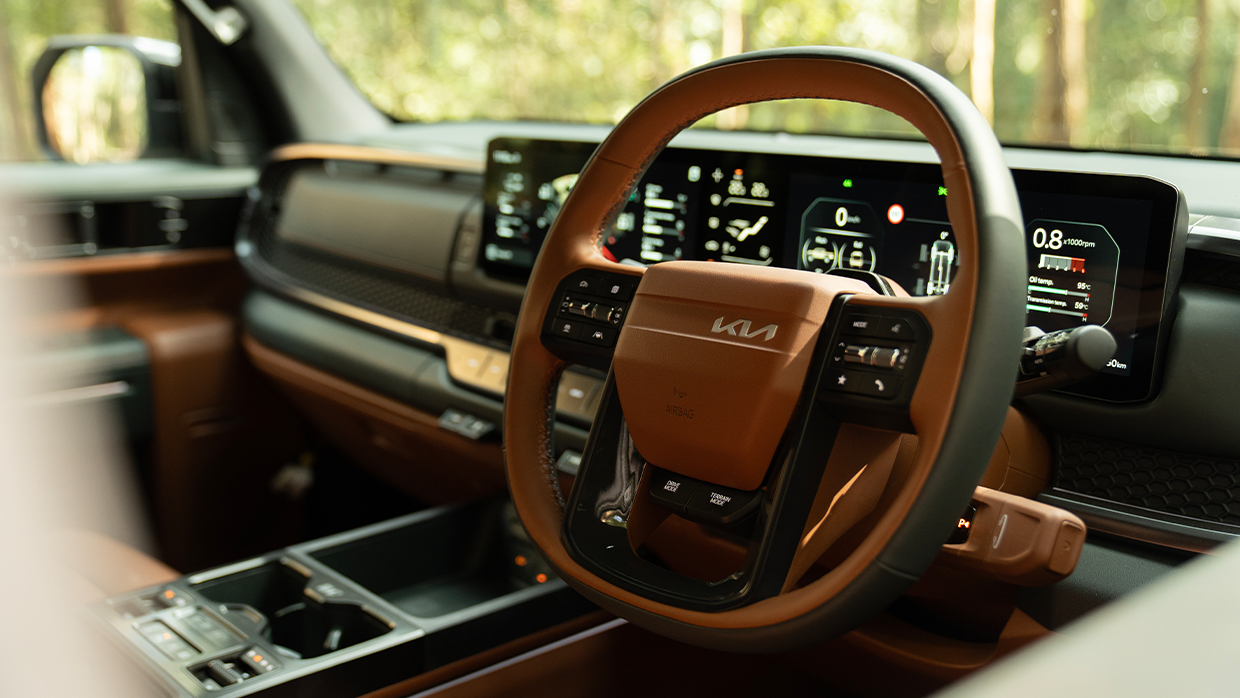
Being behind the wheel of a top-spec X-Pro variant, a selectable rear differential lock is included. Lower-spec models receive an automatic ‘reactive’ rear differential lock, which decides for you when it thinks both rear wheels should be spinning at the same speed without nay driver input.
Special mention must go to the transfer case used in the Kia Tasman, that features 2WD rear-wheel drive, 4×4 high- and 4×4 low-range to cover most bases. When engaged in 4×4, there is a direct 50/50 torque split front and rear, which is great to see. Four-wheel-drive engagement was quick and easy to navigate via a rather unique toggle on the centre console.
The party tricks don’t end there, with a clutch pack system also incorporated allowing for 4A mode. This means that not only can you to use 4A mode on-road for all-wheel drive traction, but off-road you can pop it into 4A and the clever transfer case – combined with a solid traction control system and eight-speed transmission – does the heavy lifting for you.
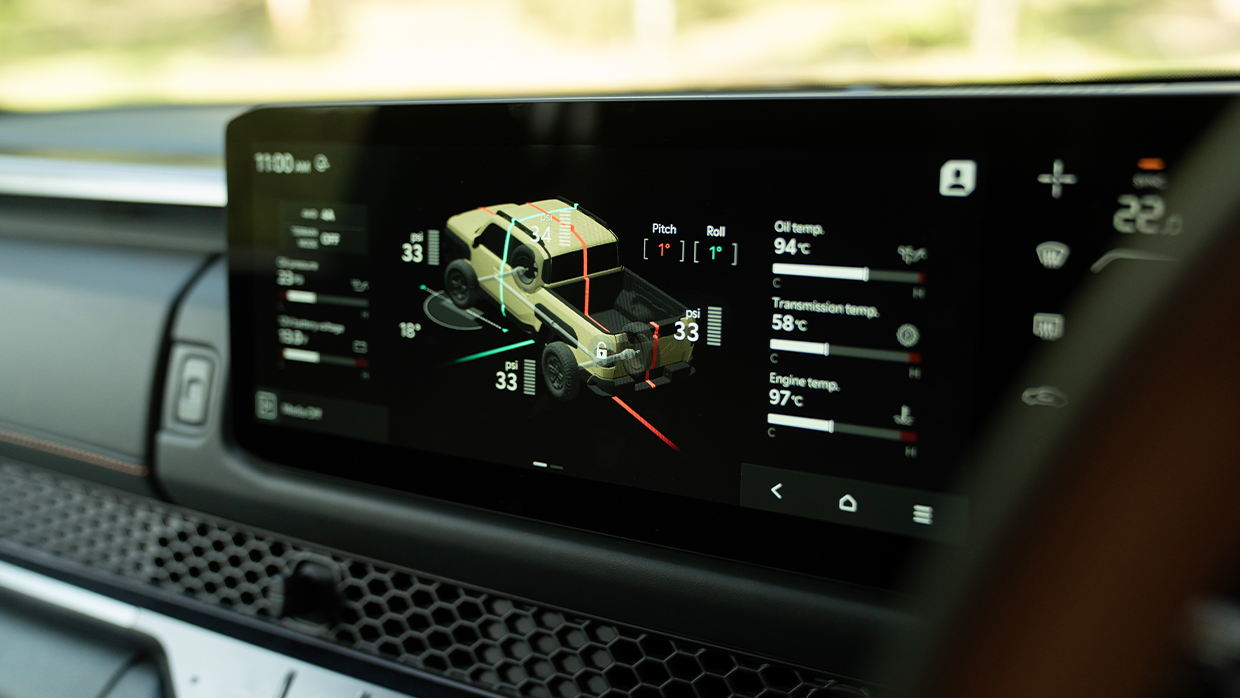
This is a very useable inclusion bringing benefits to all end users, from beginners to seasoned enthusiasts.
Selectable terrain modes are great too, which will be offered in SX models and above. These modes alter engine response, throttle response and transmission behaviour to best suit the terrain you are driving. Snow, Auto, Mud, Sand modes for example.
The top-spec variant’s X-Pro mode sees the inclusion of Rock Mode, which Kia says provides precise throttle control and torque distribution to each wheel in rocky ground.
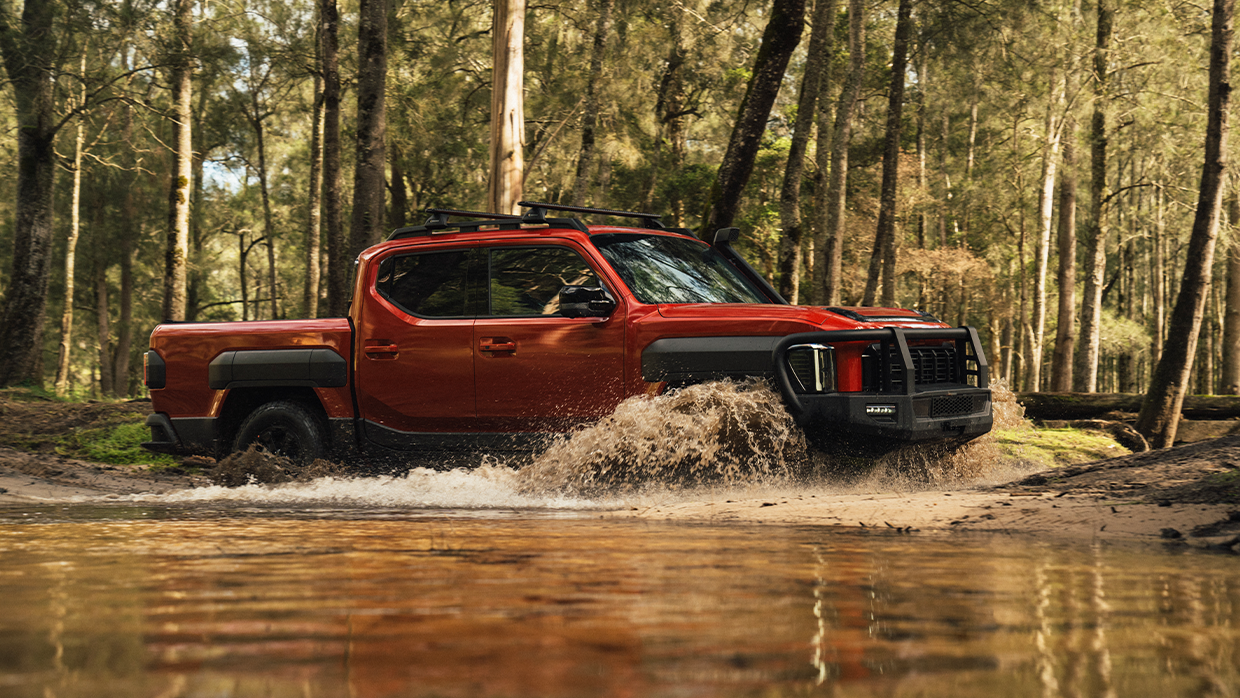
Another key inclusion for the Tasman is X-Trek mode. This is essentially off-road cruise control, not unlike the Crawl control system found in some Toyota 4x4s. It is only operational in 4L as you’d expect and has five console selectable settings, so you can dial up or down your final speed to suit.
Yes, TPMS is included in the Tasman, as well as a display of real time data that can be accessed via the off-road page on the infotainment screen.
Stats include coolant, oil and transmission temps, as well as pitch and roll angles and battery voltage status, which are all a neat touch for a 4×4 nerd such as myself. It’s nice to see more accurate info displayed rather than just a simple temp gauge.
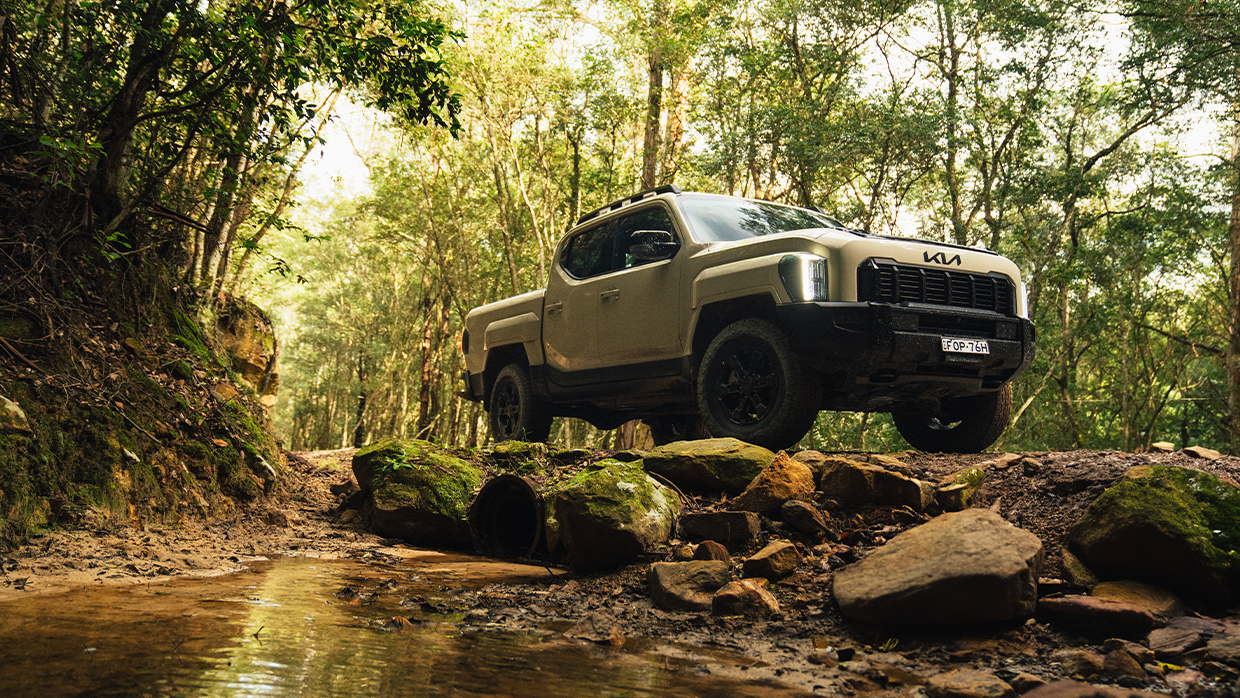
There’s also ground view monitor, using front facing cameras for usable vision when off-road to help select the right lines through technical terrain.
There are no revelations under the bonnet, with Tasman offering the well-publicised 2.2-litre turbodiesel four offering a lusty 154kW if a hardly segment-challenging 440Nm.
The cooling systems have been beefed up for the Tasman, a water-to-air intercooler has been packaged to chill intake temps. One thing you’ll actually hear is a large cooling fan for the radiator. Kia says this is the largest and highest performing fan they have ever produced.
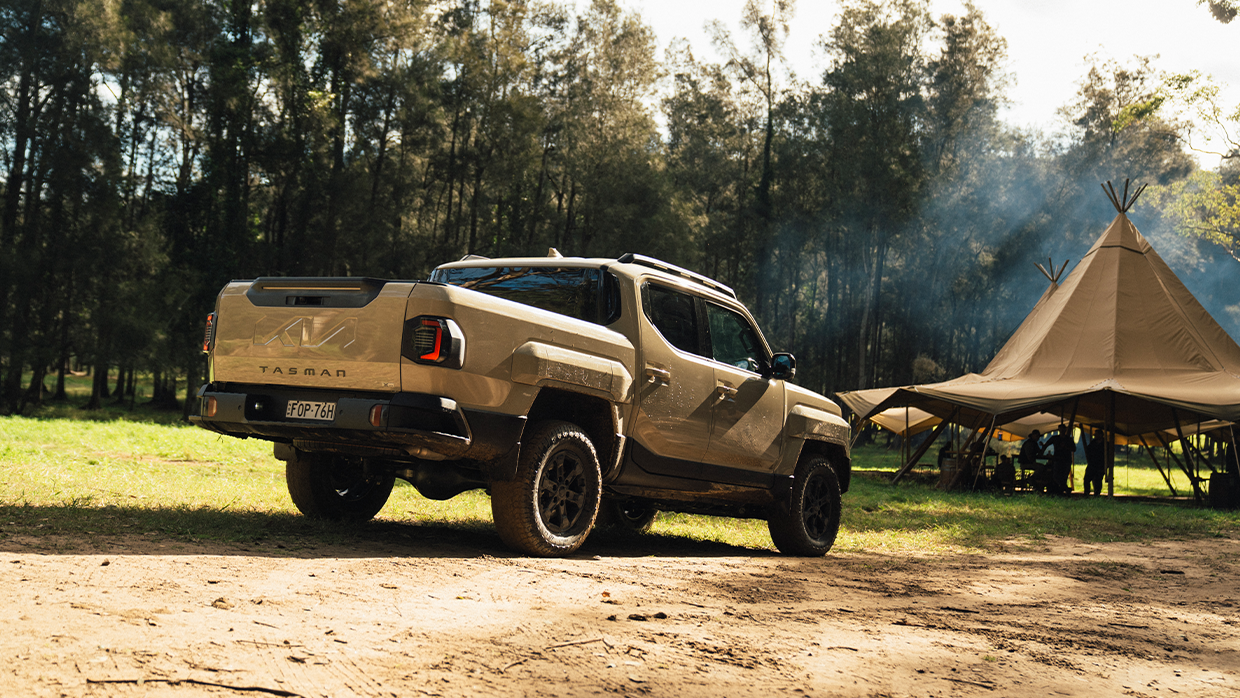
I didn’t see a filler for an AdBlue system during my walk around. So, for those who don’t want to run AdBlue in their turbo-diesel 4×4, the Kia Tasman looks at this stage to not require it. Something those who tow regularly may appreciate.
Speaking of towing, Tow Mode is another important included function where you are able to select what weight range you are towing, to best prepare the vehicle via an weight based shift pattern in the transmission which can opt to hold gears for longer when climbing.
A trailer brake controller is standard across the range too, with 20 levels of adjustment to dial in. Towing wiring harnesses weren’t finalised, so we weren’t able to tow at this event. We’ll look at that closer to the July launch, but for the record, the 2126kg ute’s GVM is 3250kg and GCM 6200kg, with a payload of 1124kg.
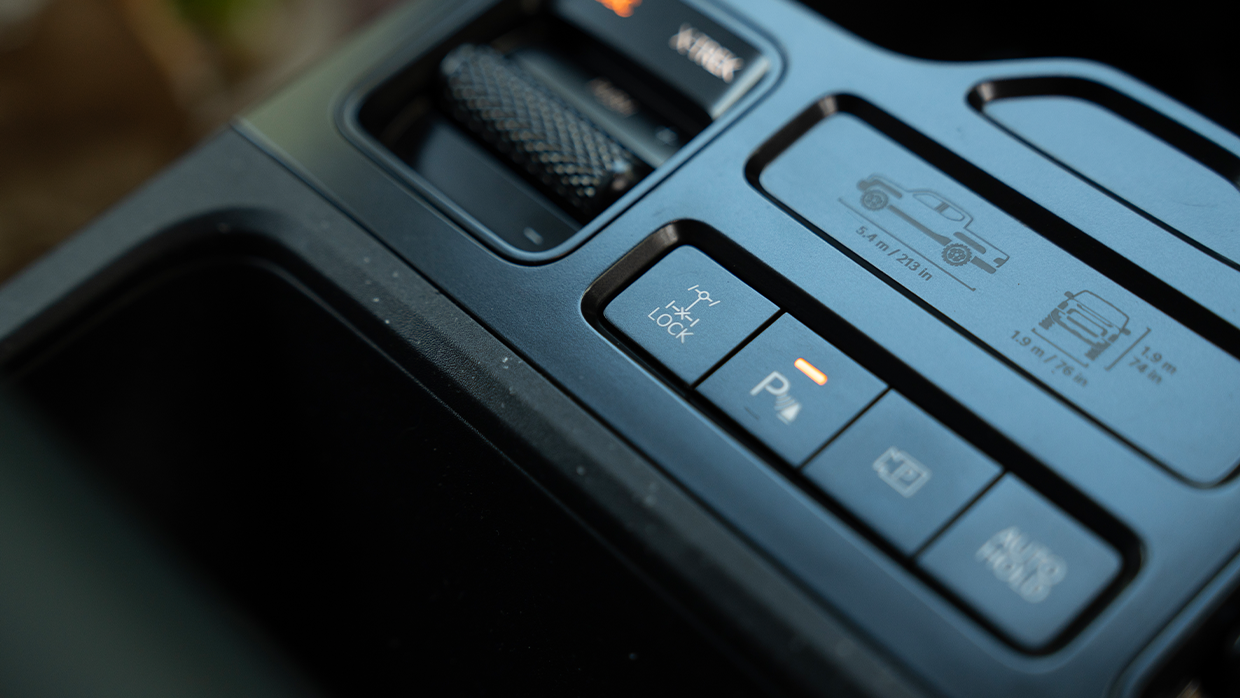
However, it is safe to say that Kia not lacking tech-wise for a 4×4 ute. The off-road mode on screen for example, was super helpful. Providing everything from off-road cameras to relaying vital information on things like oil and coolant temps.
For this initial test, we had some offset moguls to measure suspension travel and traction control systems. A side angle slope, and a rocky hill climb, as well as some large rocks and a small yet tidal river crossing. And we’re impressed so far.
Rounding out first impressions is styling. Our hot take? The Tasman look better and less cartoon-like in person that this reviewer was expecting. Especially with body colour, as opposed to contrasting, wheel flares.
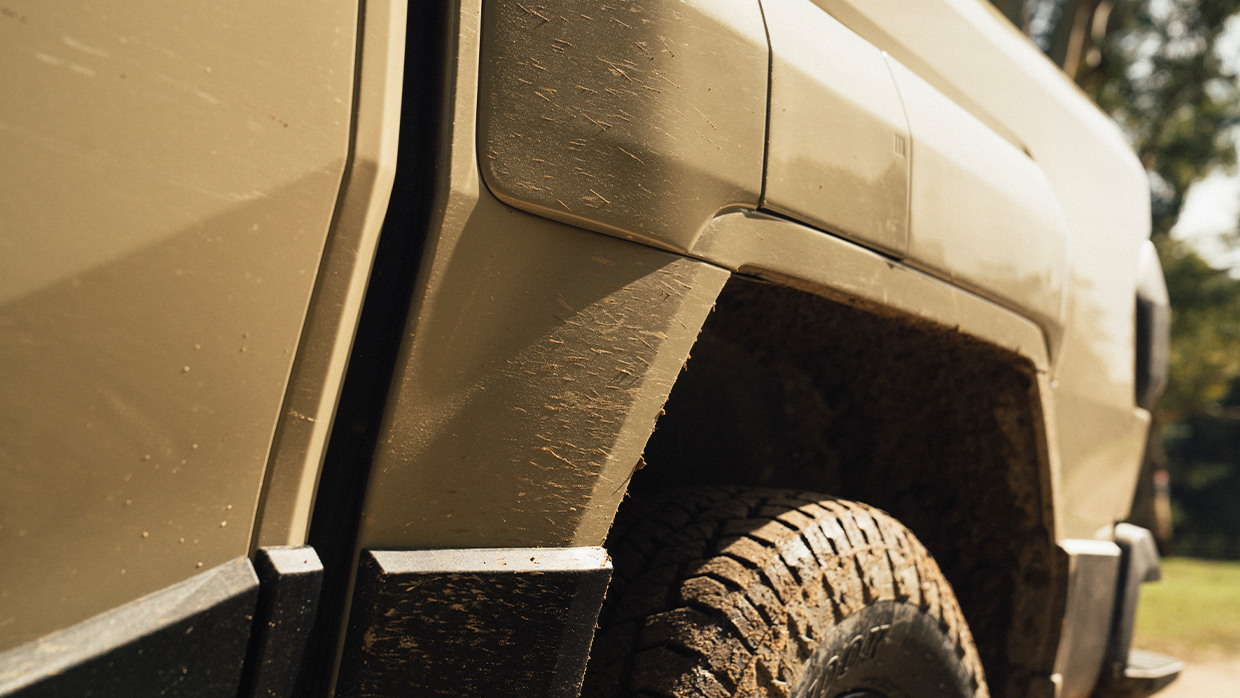
If you’re baulking at the styling seen on the other side of the television screen or computer monitor, wait until you see the Tasman in the flesh.
Even from our first pre-production off-road drive it’s pretty clear that the Kia Tasman does offer is a sweet blend of comfort and tech, matched with genuine off-road ability and ruggedness.
While we still have questions around towing ability and performance figures, we see genuine potential for this model in the Australian market. We’re certainly keen to explore the Kia Tasman further.
Chasing more Tasman?


Often compared with
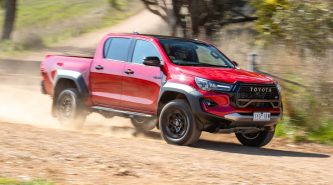
olkswagen Golf GTI Mk 8.5 2025 review: Australian first drive
5 months ago

The evergreen Golf GTI gets a mid-life makeover for generation eight, creating a hot hatch that’s now easier to live with, easier on the eye, and better than ever to drive
Good points
- Vastly improved media
- Fantastic handling
- Handsome 19-inch wheels
- Excellent cabin and boot
- Tireless dynamic performance
Needs work
- Ride can crash through
- Interior plastics inferior to last generation
- Pricing is getting up there
- Tweaked exhaust system could be raspier
It was the concession that had to happen – an admittance by Volkswagen AG in Wolfsburg that its approach to slick cabin technology in the 2021 Mk8 Golf was deeply flawed.
A convoluted multimedia screen with touch-sensitive temperature controls that were bafflingly unilluminated, plus haptic steering-wheel controls that were too easily bumped when driving made the Golf 8 somewhat frustrating when it came to ergonomic functionality.
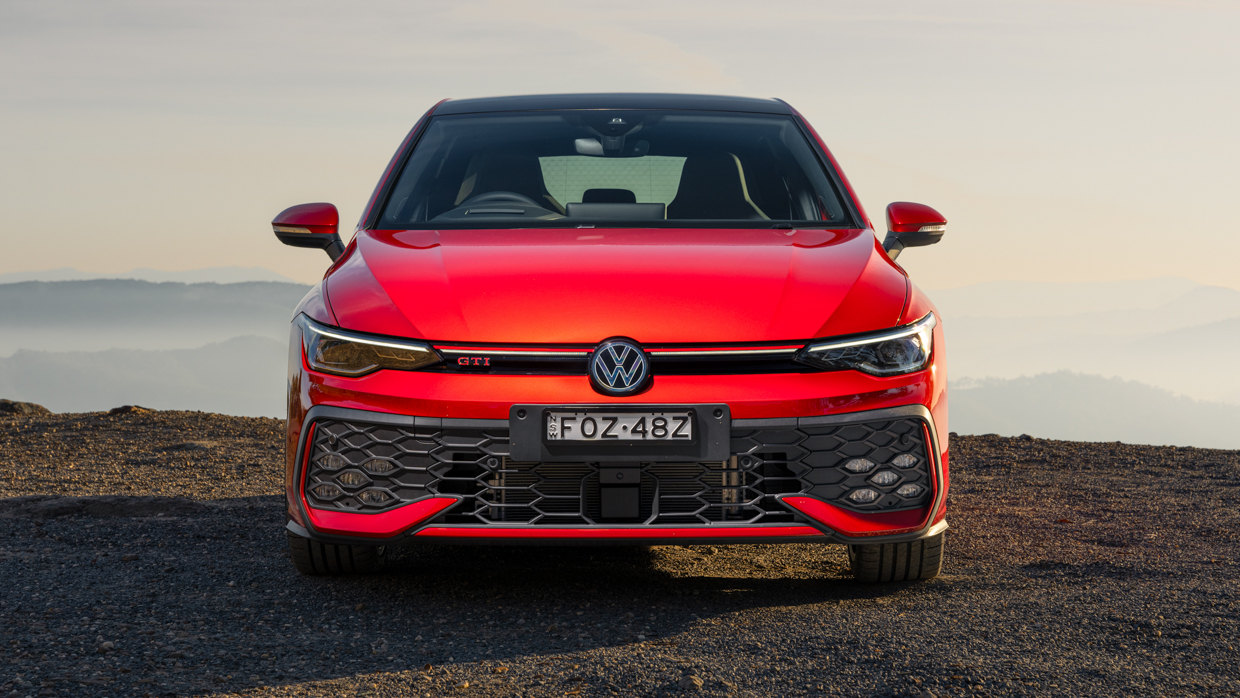
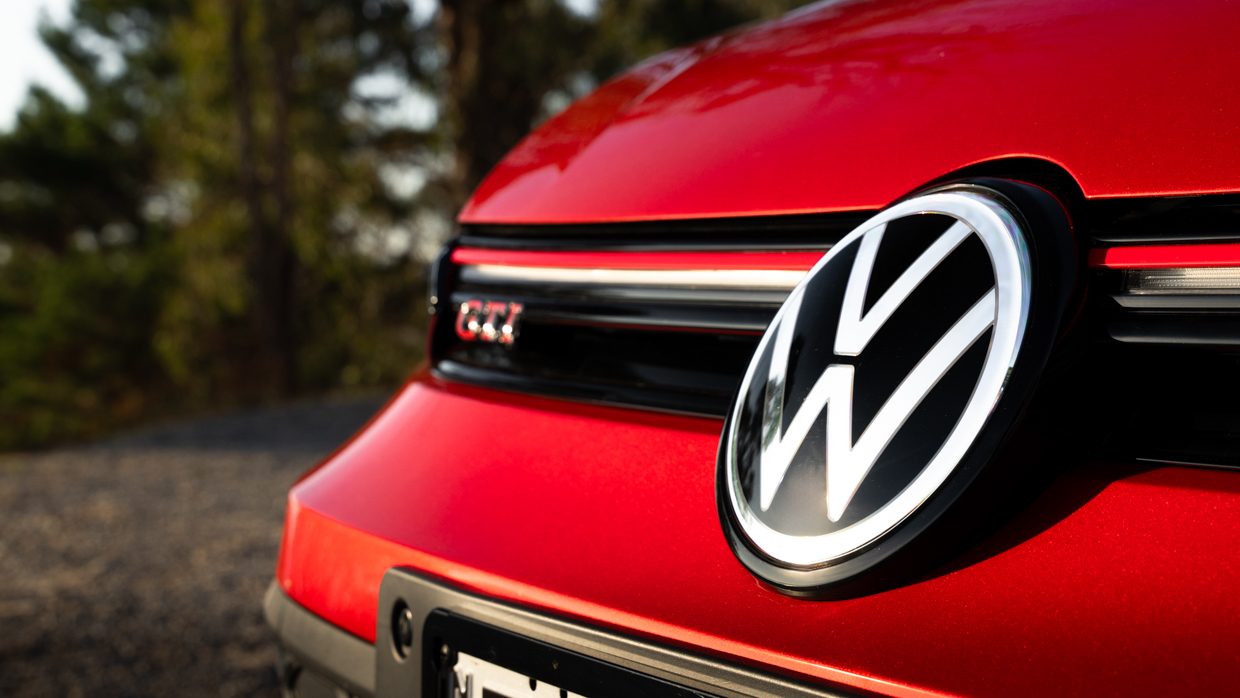
Combined with Volkswagen’s post-‘dieselgate’ cost-cutting evident in harder, less tactile interior plastics – especially in the rear seat – the eighth-generation Golf felt a step down in many ways compared to its benchmark Golf VII predecessor, even though it remained an impressive car in general.
Four years on, the Golf 8.5 mid-life facelift is here to right the Mk8’s wrongs.
All-new touchscreens (12.9-inch in the GTI, as well as the 110TSI Golf Style and R-Line) with fixed widgets across the top and permanent climate-control switches across the bottom (with illuminated temperature controls – just like a 1970s car!), as well as a return to the Mk7’s physical steering-wheel switches has increased the Golf’s liveability by a substantial margin.
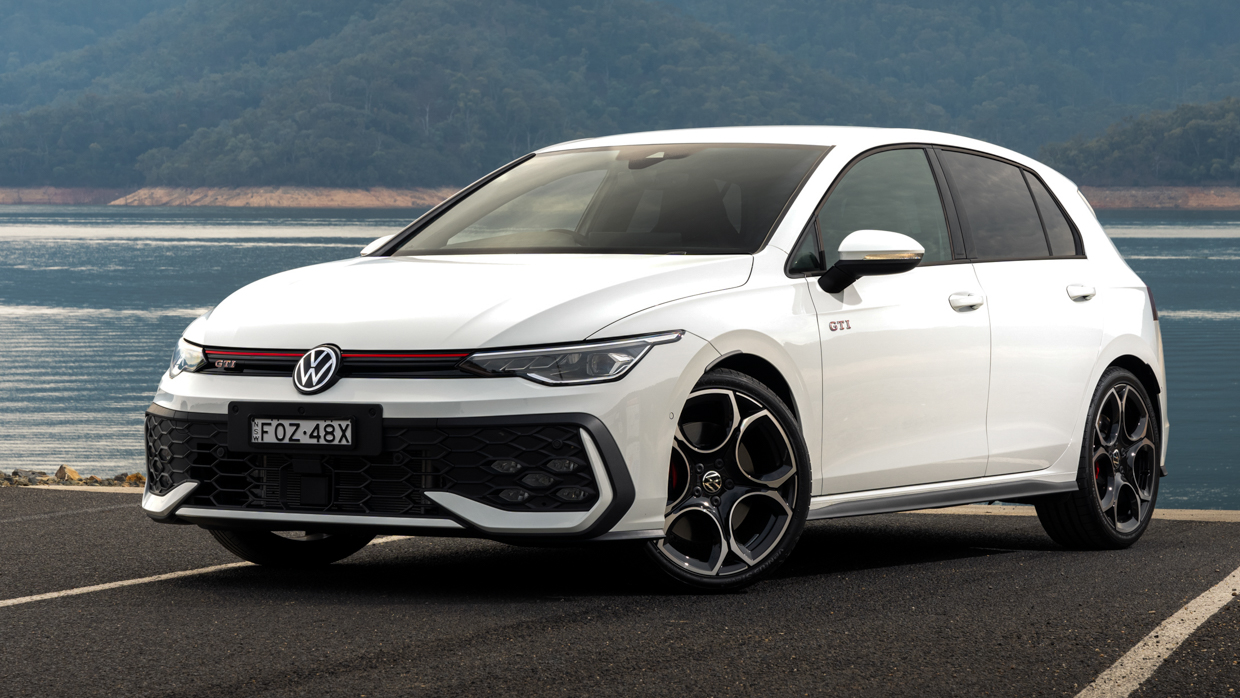
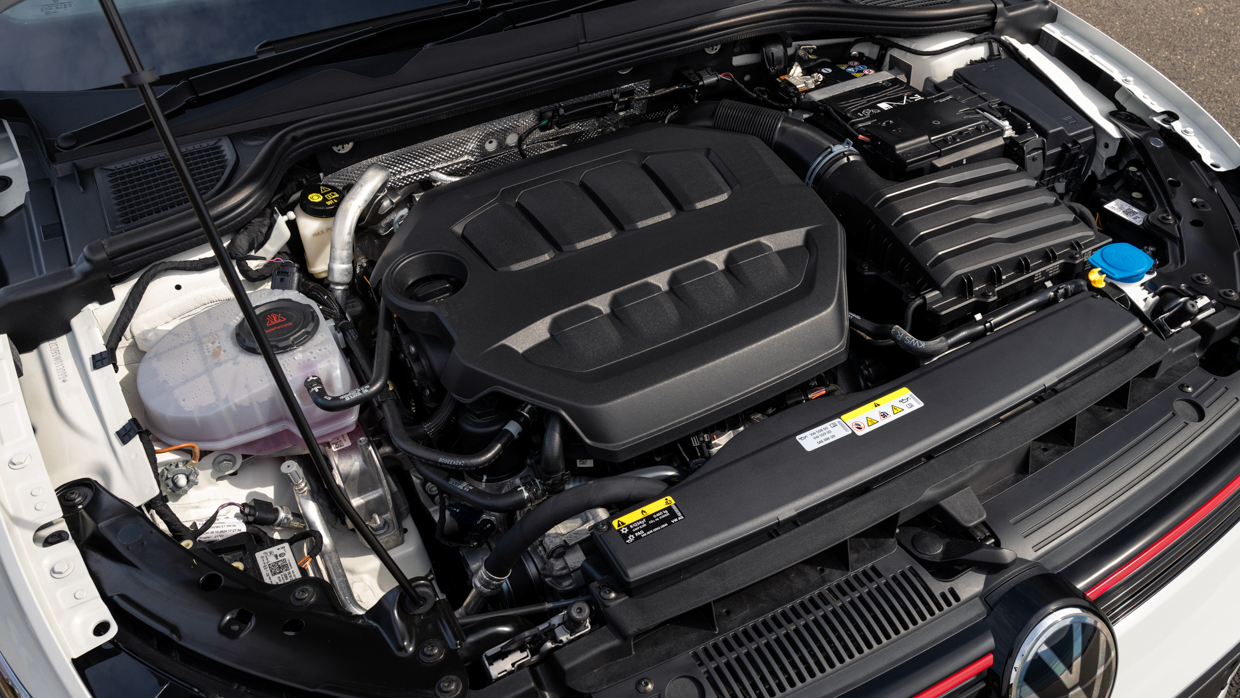
Yet there’s even more news in Golf GTI form because it’s now the fastest, most powerful standard GTI in history – the 2.0-litre turbo-petrol four now pumped to 195kW at 6500rpm (up from 180kW) and packing a sub-six-second 0-100km/h claim for the very first time (5.9 seconds), backed by a fruitier exhaust note.
The exterior has been similarly finessed with new front and rear bumper designs, gorgeous new 19-inch ‘Queenstown’ alloys with either Bridgestone Potenza S005 or Hankook Ventus 235/35R19 tyres.
Elsewhere, there’s classy new red ‘GTI’ lettering on the front door uppers (replacing front mudguard fillets), and sleeker LED Plus front headlights with a horizontal light band spanning the nose, plus an illuminated VW logo for the first time in Australia.
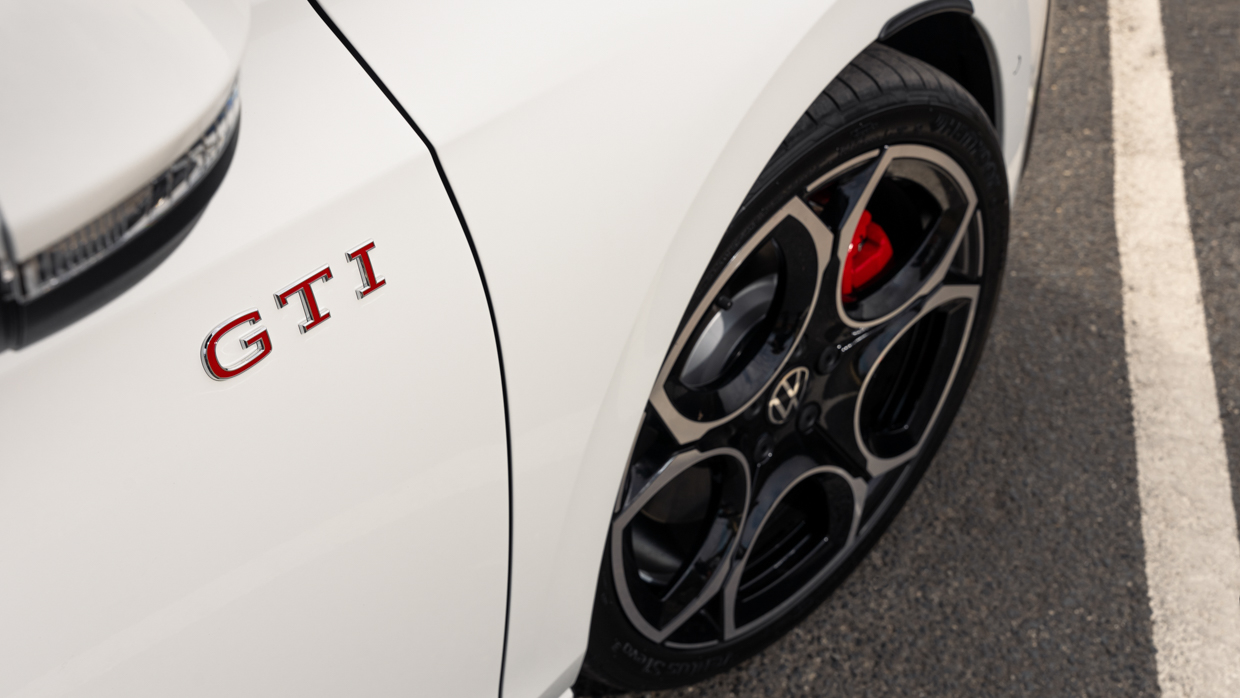
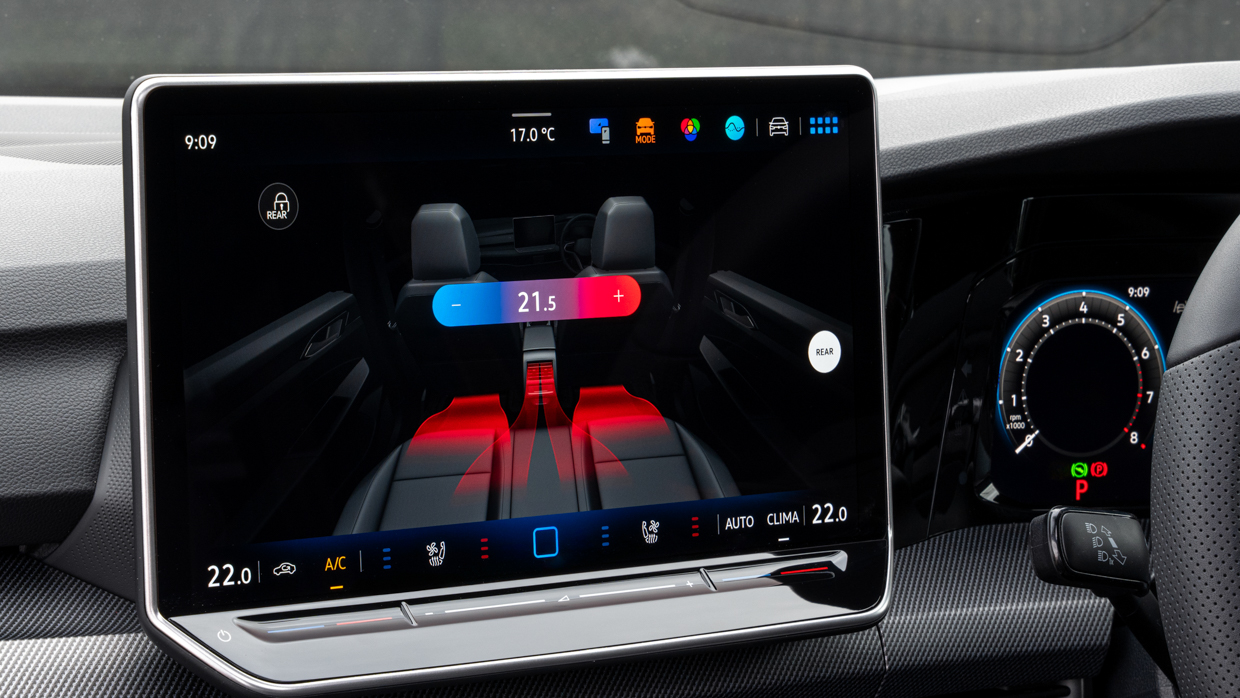
Standard equipment on the Australian GTI is decent, including 15-setting adaptive dampers, metallic paint, front fog lights, three-zone climate control, height-adjustable sports front seats, ‘scale paper’ (tartan) cloth trim, and every safety system you can think of, including an ESC Sport setting to allow for some handling fun while retaining a safety net.
Aside from Kings Red metallic paint ($300), the only options are a sunroof ($1900), Sound and Vision package ($2000 – head-up display, 480w Harman Kardon 10-speaker audio, 360-degree camera), and a Leather Package ($3900 – the sound/vision features, plus Vienna Leather upholstery, electric front seats with three-position memory and heating/ventilation).
Now starting at $58,990 before on-road costs, the MY25 GTI has nudged up a few grand in price compared to its Mk8 MY24 predecessor ($56,090), though it does get 19-inch alloys as standard – a necessary addition if the Mk8.5 was to clearly differentiate itself from the Mk8.
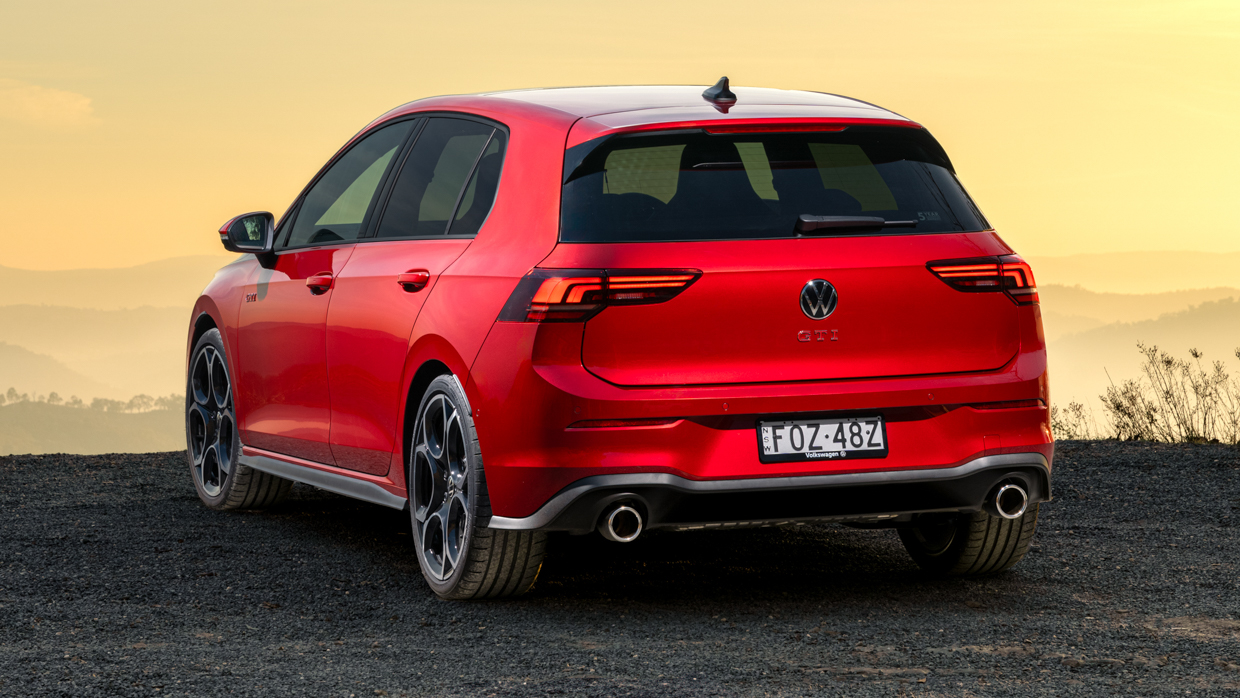
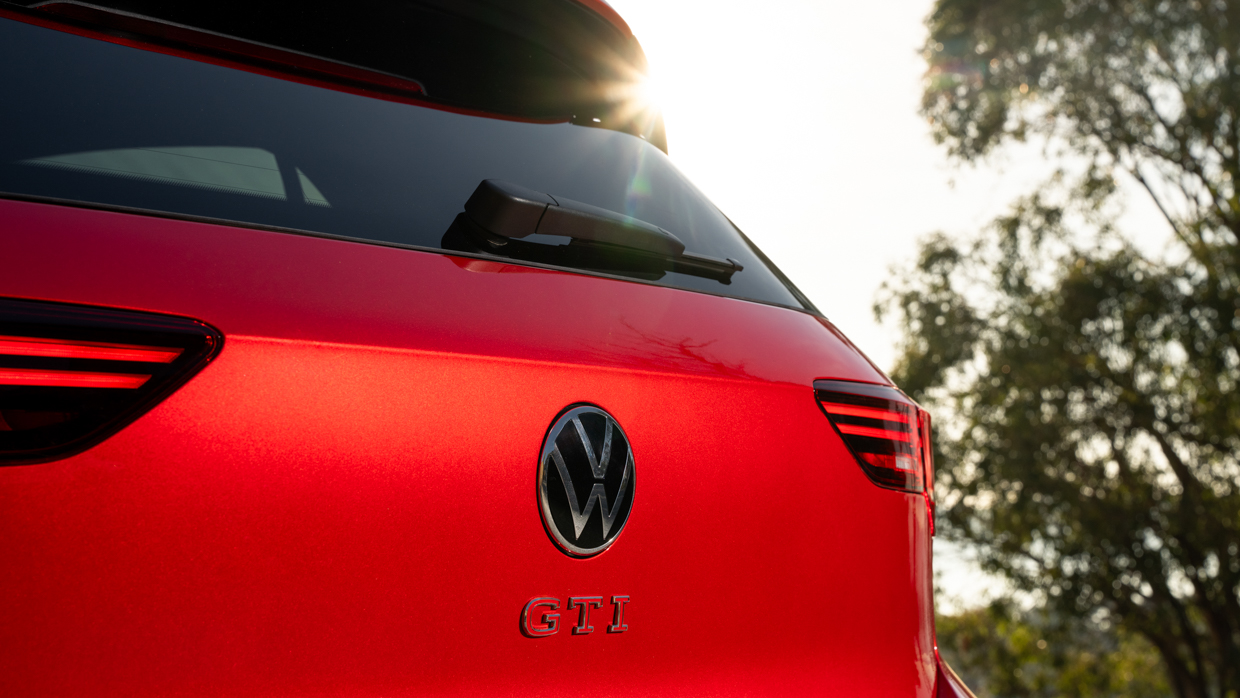
In the UK, the new 8.5 retains the previous model’s polarising 18-inch ‘Richmond’ alloys, which wear a slightly narrower tyre and simply aren’t as cool as the new 19s.
Volkswagen hasn’t provided specifics about suspension tuning, though a smattering of finessing has supposedly enhanced what is essentially the Mk8 set-up. Given that the new 235/35R19 tyres have a similar sidewall height to the previous 225/40R18s, the ride feels slightly improved, though it’s hard to be certain without a direct back-to-back comparison.
What is undoubtedly true is that the Mk8.5 GTI is a seriously sporty car for an entry-level hot hatch (the under-engined 1.4-litre Golf R-Line can’t even be classed as a warm hatch). Indeed, the 2025 GTI is such a focused driver’s tool and so rapid in both a straight line and around corners that it would’ve previously been muscular enough to masquerade as a Clubsport version.
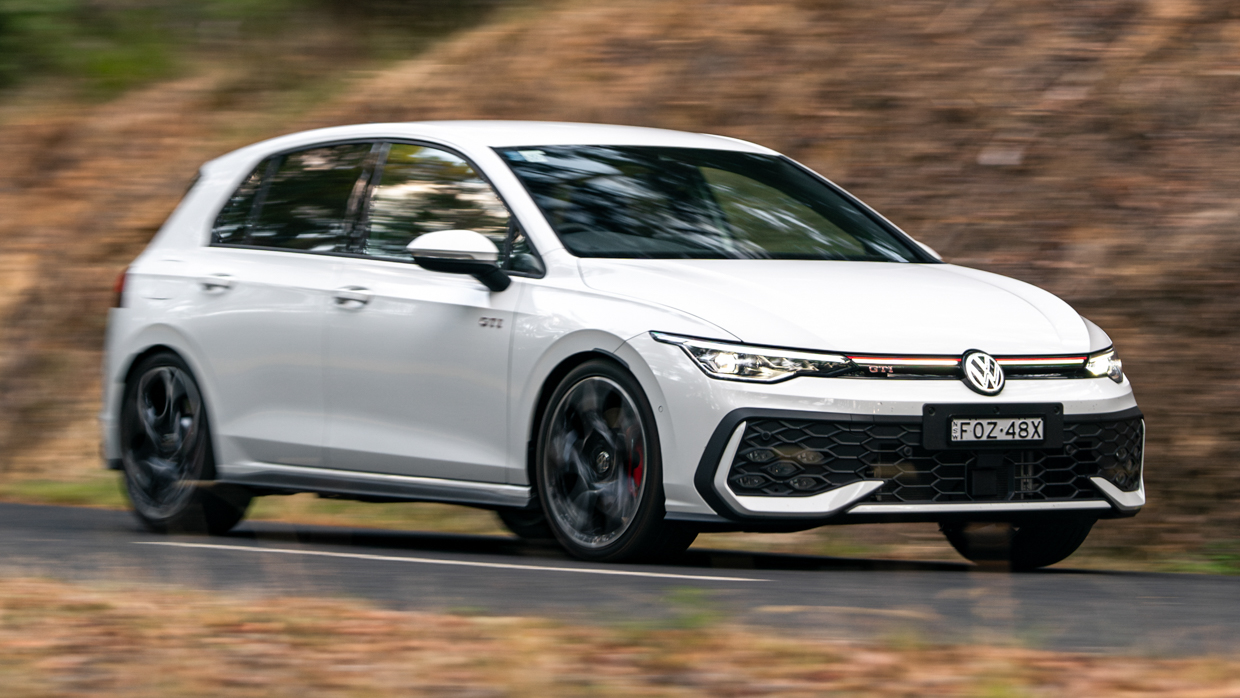
That hot Golf is still on the shelf, at least for Australia, and will likely be introduced in the near future as a ’50 Years’ Clubsport celebratory edition.
The Golf nameplate may have already clocked the mid-century mark (in mid-2024) but the GTI’s ’50th’ moment doesn’t arrive until this September, commemorating its ’75 Frankfurt Show debut.
The Mk8.5 GTI Clubsport boosts outputs to 221kW and 400Nm, sprints to 100km/h in 5.6sec, and can be optioned with a Race package – at least in Europe – that raises the top speed to 267km/h and adds a barky Akrapovic sports exhaust.
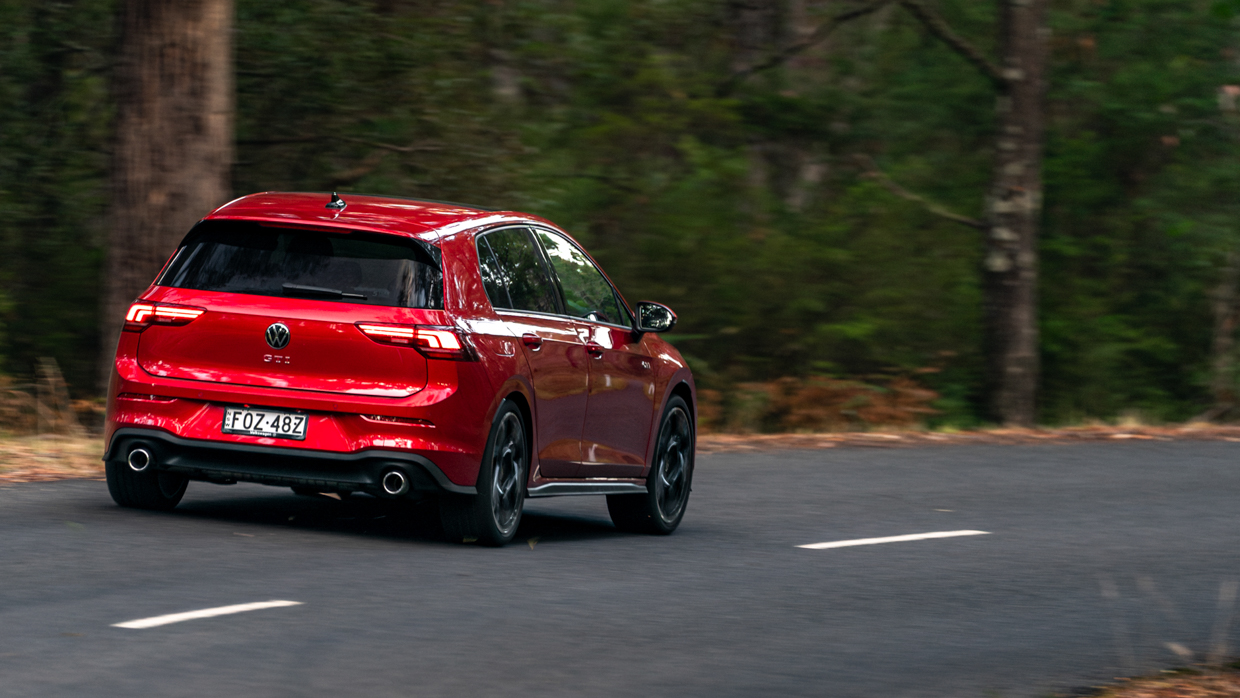
In the meantime, the regular GTI will easily be sporty enough for most punters. While its ride quality lacks that all-rounder absorbency that defined the Mk5 to Mk7, even with adaptive dampers, it still devours most Aussie country roads with a decent comfort, apart from moments when big hits bang its suspension into the bump stops.
That’s with the 15-way adjustable adaptive dampers positioned at the cushier end in Individual mode.
Given its suspension discipline, the GTI can be left in Comfort mode most of the time. In that setting, its ‘progressive steering’ offers decent weighting and delightful accuracy (with just 1.9 turns lock-to-lock).
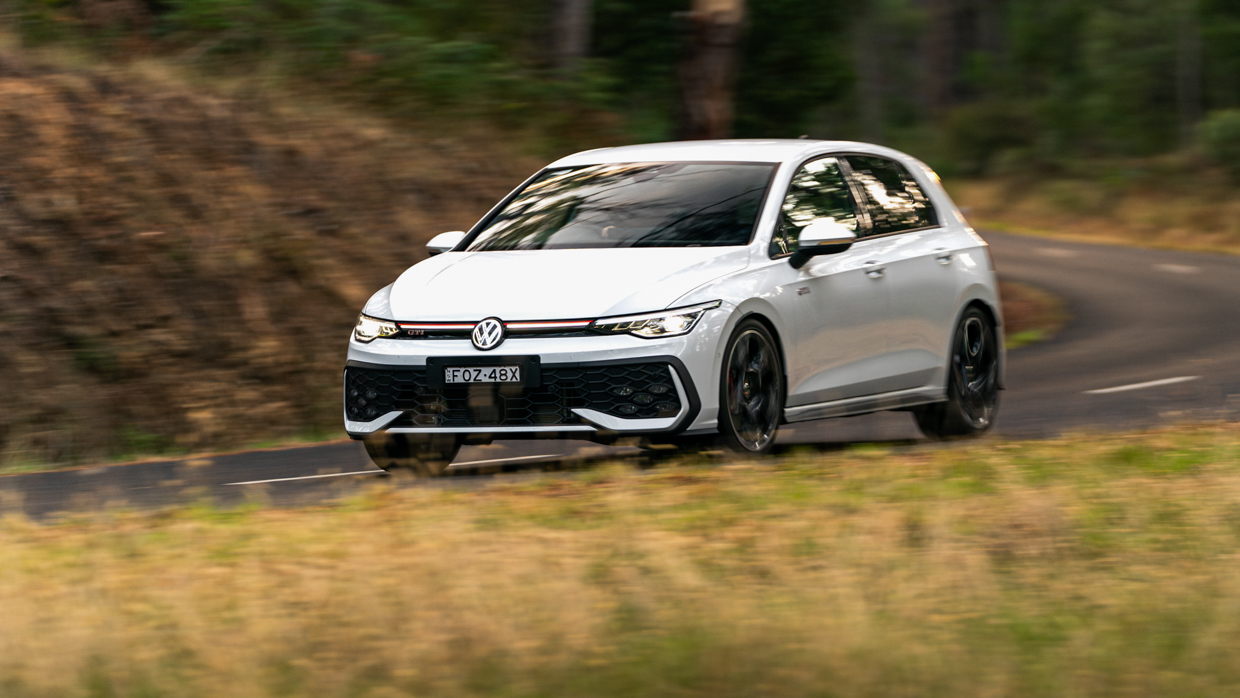
This combines with excellent handling balance and the smarts of its ‘extended electronic front differential lock’, which acts like a mechanical front diff but can adjust its severity to suit the drive mode.
Even so, in Sport mode, the GTI’s front diff is still smoother and more refined than many other hot hatches, yet really sucks the car into a corner, allowing you to trace a super-tight line with the inside front wheel, while being surprisingly aggressive with the throttle.
It also firms up the steering weighting, though tackling Victoria’s super-challenging Targa High Country roads on the GTI’s Aussie launch induced a degree of thumb ache with the steering in Sport.
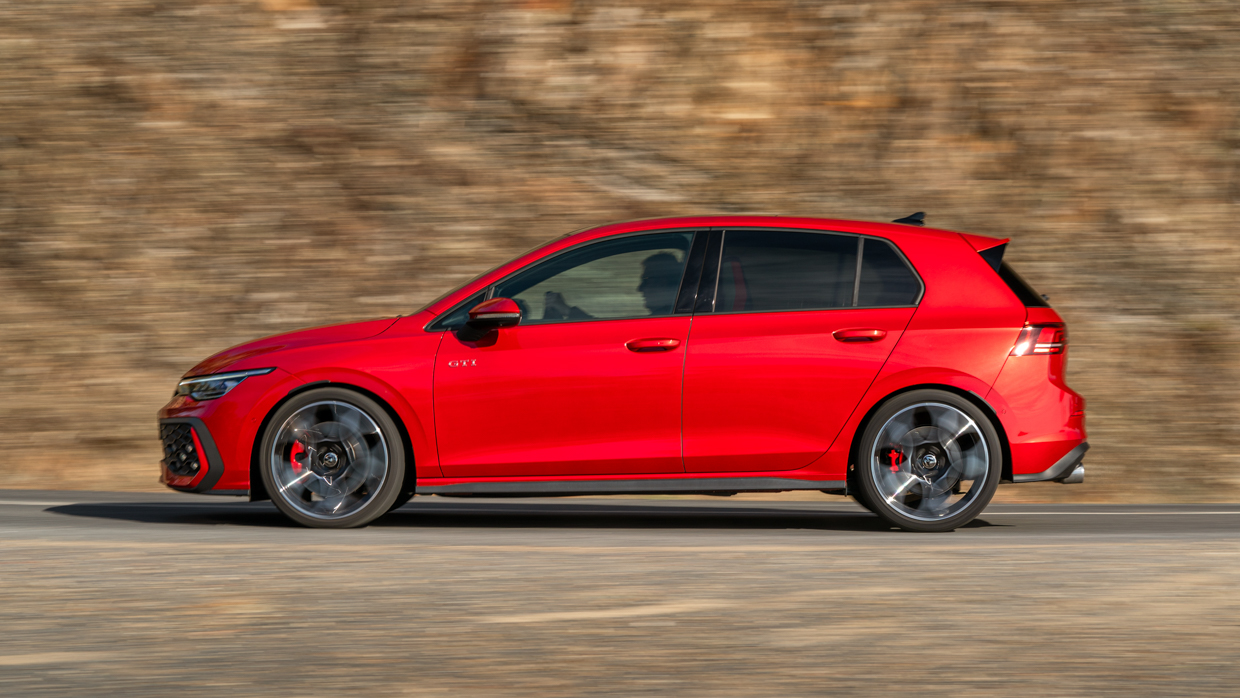
Dial back to Comfort mode and there’s a little more roll, a touch more understeer in tighter corners and a touch more tail sway lifting off the throttle, as well as greater suspension absorbency.
Better yet, select Individual and choose the settings yourself, including interior and exterior engine sound, as well as the aforementioned ESC Sport stability calibration.
Annoyingly, Volkswagen doesn’t go into specifics when describing the GTI’s braking system other than “17-inch discs” – the front pair being ventilated.
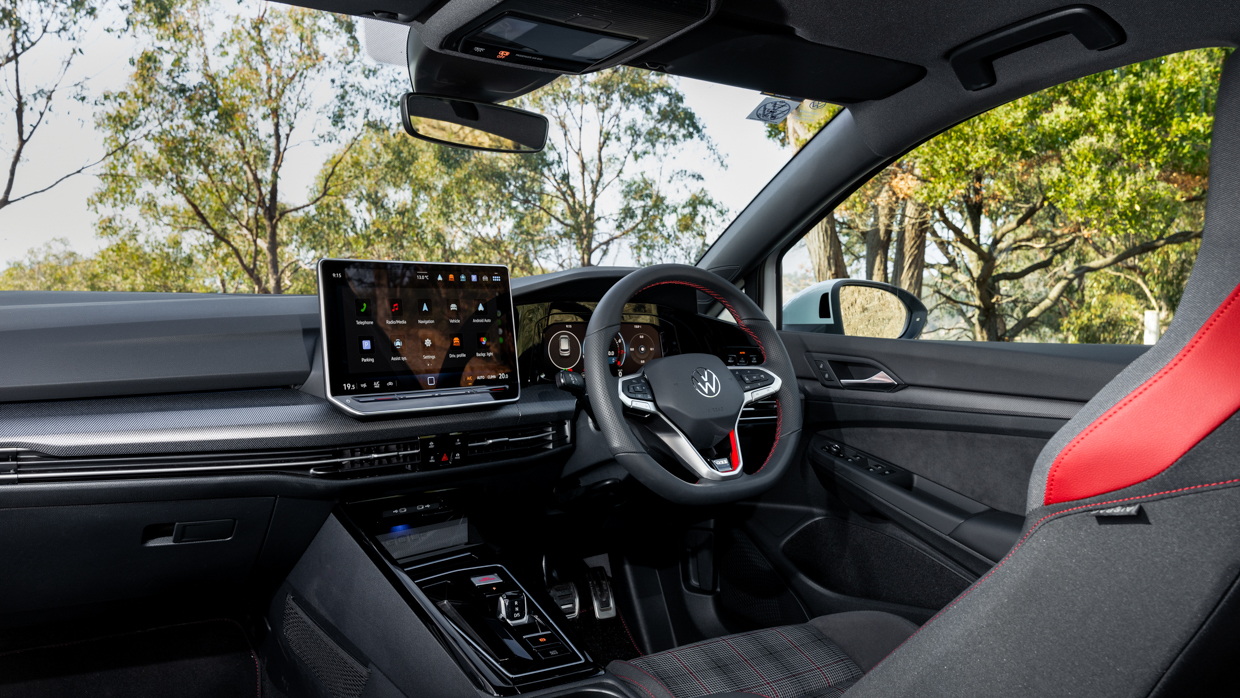
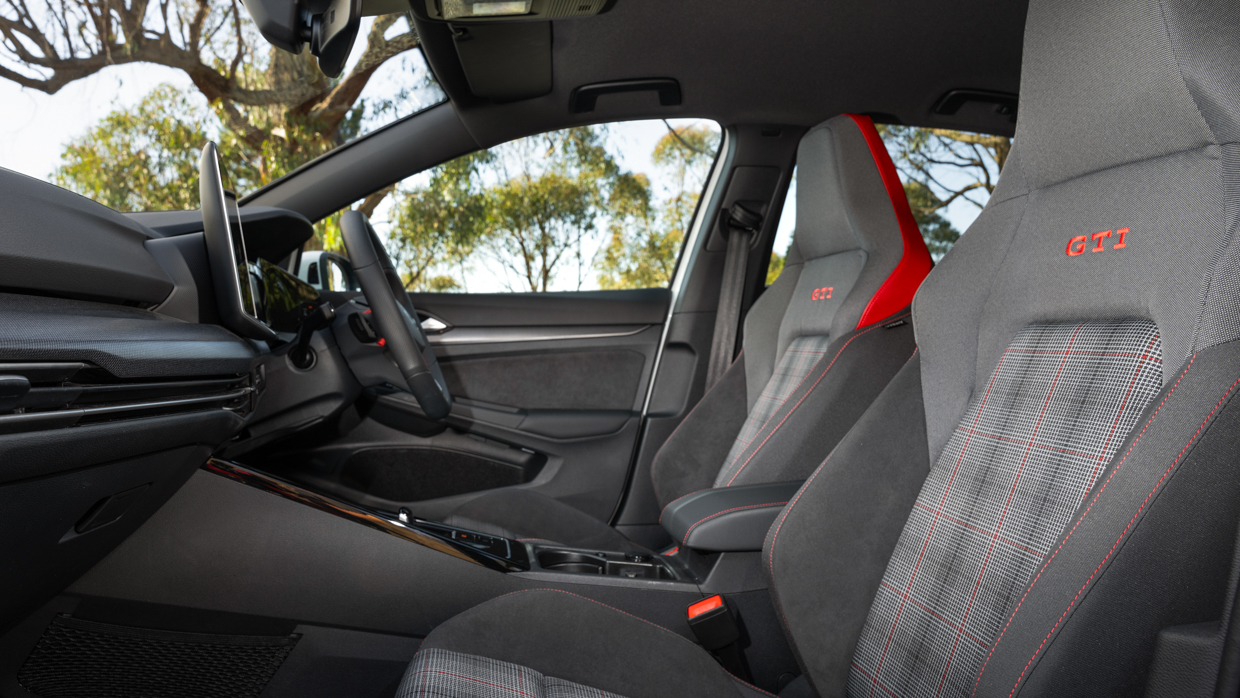
But what really matters is their effectiveness when being punished, and they can cop a serious pounding without wilting or increasing pedal travel – at least on the road.
The rest of the GTI package remains much as before. Even the standard sports seats are brilliant, despite all-manual adjustment, because they’re huggy without being too cinched in, and feature crank-handle height adjustment combined with an infinite-dial backrest.
And the GTI’s rear seat is typically impressive, offering ample under-thigh support and leg/head room, combined with carpeted door bins able to take large bottles, proper door grab handles, seat-back phone holders and rear-seat climate control.
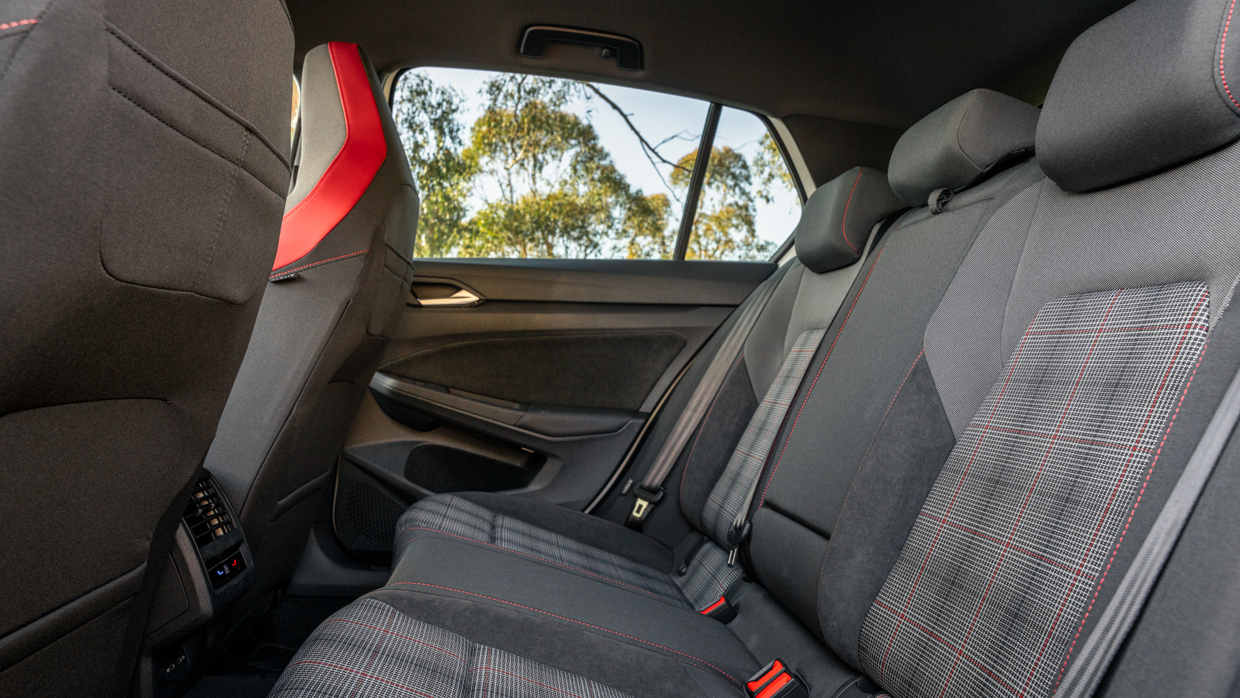
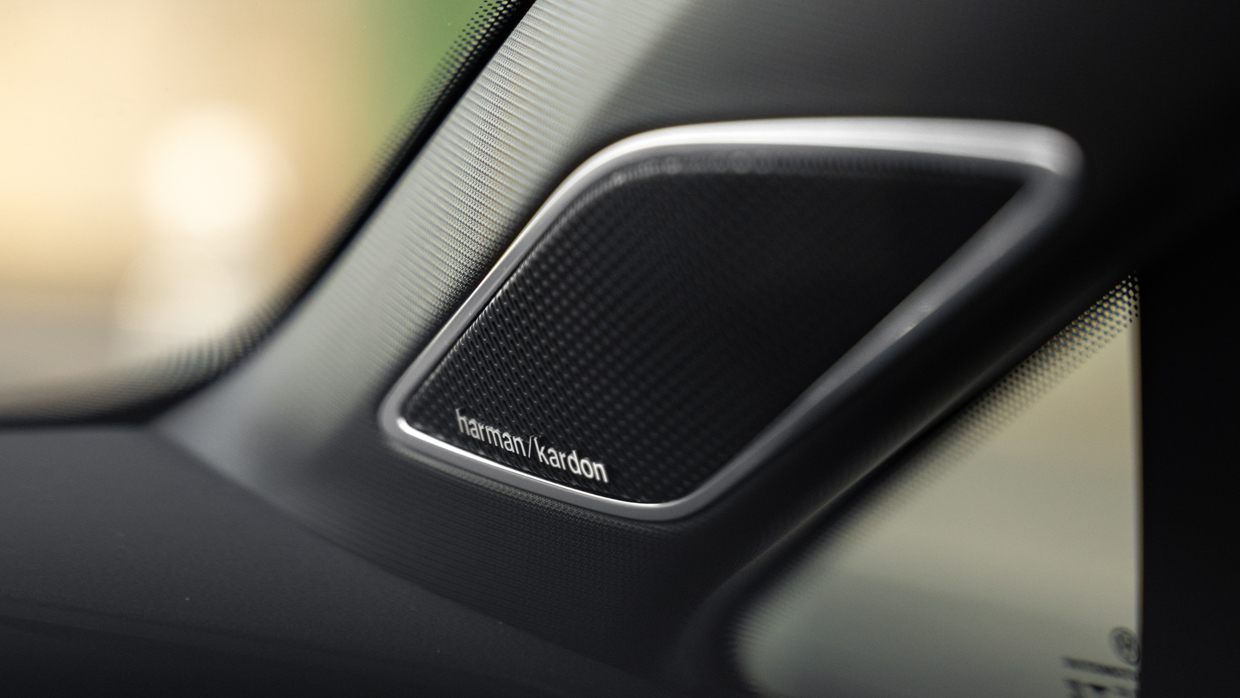
Opting for the Vienna leather option introduces a step up in tactility (the tartan cloth is a little rough-feeling, though alleviated by suede-like bolster inserts) and brings front-seat ventilation and fully electric adjustment with three-position memory as well.
The upgraded 10-speaker Harman Kardon stereo and head-up display of the Sound and Vision package are also tempting, though none of this is ultimately necessary. A base white GTI with zero options is still plenty of huggable hot hatch.
Perhaps the Mk8.5 GTI would benefit from a little more work finessing its ride for counties like Australia, and making its exhaust note even raspier.
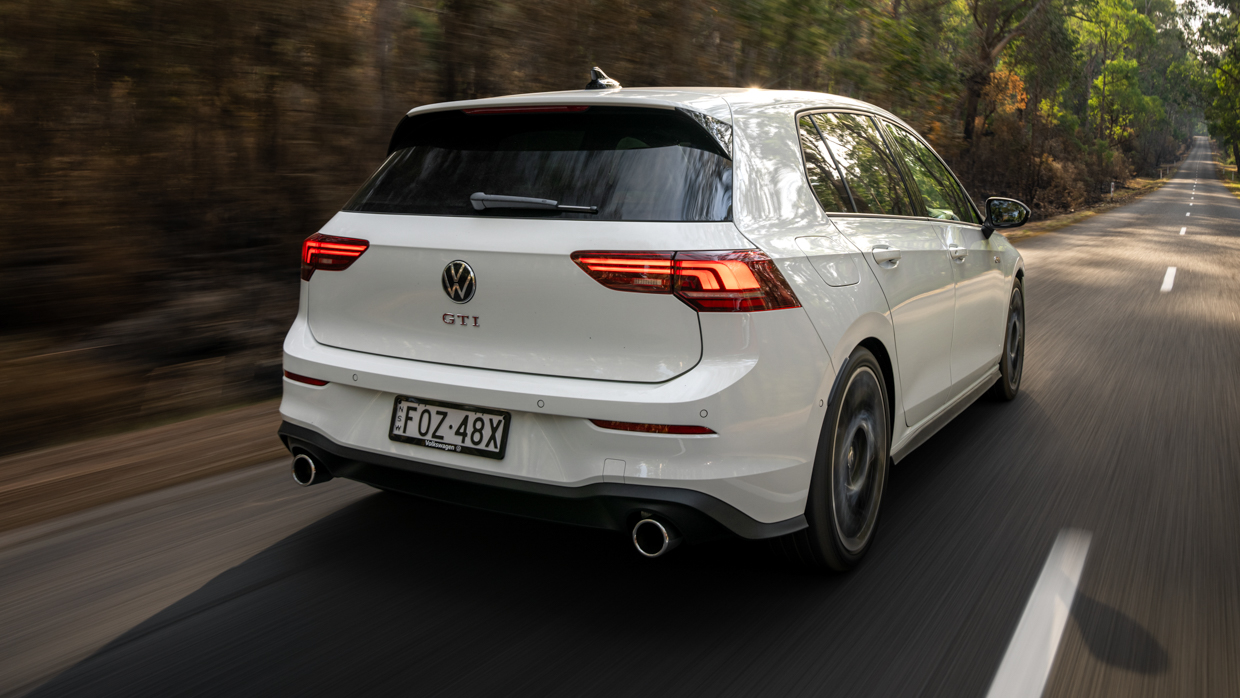
And I wish VW still offered a six-speed manual version because its shift quality was always a delight, even though the seven-speed dual-clutch is now borderline-faultless in its ultra-rapid upshifts and downshifts.
Yet there’s never been a better handling, more wholly rounded Golf GTI than this. As far as velvet-tinged athleticism goes, this 2025 iteration remains right at the top for mixing class with clout.
And if that still isn’t enough, there’s always the mooted 221kW Clubsport version, as well as the forthcoming 245kW Mk8.5 Golf R and R Black Edition. For lovers of hots Golfs, it seems the time is now.
Chasing more Golf?


Often compared with




